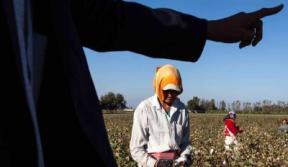Publication Date:
November 27, 2013
This year, the cotton harvest in Uzbekistan began in early September and ended in mid-November. The Uzbek government systematically forced farmers to produce state-established quotas and children and adults to pick cotton in one of the largest state-orchestrated systems of forced labour in the world.
The government introduced extensive measures to create the impression of voluntary work in the cotton fields, but behind this screen, as in previous years, the government coercively mobilized over a million citizens, including children as young as age 15, to cultivate and pick cotton. Despite the presence of International Labour Organization (ILO) observers, the government silenced Uzbek human rights
monitors through arrest, imprisonment and intimidation. Eleven citizens lost their lives as a result of the
forced-labour system.
The expected yield of the forced labour of Uzbek children and adults was 3.35 million tons of cotton. The Uzbek government maintained control of land, prices to cotton farmers and all cotton sales. The
government will only account for income from cotton in the extra-budgetary “Agricultural Fund,” to
which only the highest level government officials have access and knowledge of how the proceeds are
used. The forced-labour produced cotton from the 2013 harvest is destined primarily for firms in China
and Bangladesh, and secondarily for firms operating in Uzbekistan, such as Daewoo International and
Indorama.
The extent to which the ILO and the international community can work with the Uzbek government to
apply fundamental labour conventions depends on Tashkent. The Uzbek government’s total control over
the cotton sector means they can end forced labour. Yet overwhelming evidence of systematic, state-orchestrated forced labour and the government’s extensive measures to deny such human rights violations
indicate a lack of political will to do so. More than ever, businesses and governments should condition
use of Uzbek cotton and trade with Uzbekistan on ending forced labour, thereby creating incentives for
the Uzbek government to work seriously with the ILO on much-needed reforms.
This report updates the Review of the first month of the 2013 Cotton Harvest in Uzbekistan. The evidence
presented herein on the continued use of forced labour in the 2013 cotton harvest was gathered by human
rights defenders in Uzbekistan through interviews and observations during the harvest. They also
reviewed government documents and collected both local and international media reports on the cotton
harvest. Information was gathered from seven regions. Each region had a group of local monitors who
monitored the cotton harvest from beginning to end. All interviewees had direct experience of
participating in the 2013 cotton harvest. The interviewees were from different families and different
schools. The teams of human rights defenders received training on monitoring and interview techniques
by a social scientist. The monitoring teams operated anonymously for their personal protection.
Publication Type:
- Report

